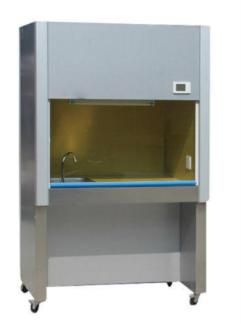Exploring the Workings of Fume Hoods
Body
Fume hoods are indispensable pieces of equipment in laboratory settings, providing crucial protection for researchers and lab personnel against hazardous gases, vapors, and airborne particles. These enclosed workspaces play a pivotal role in maintaining a safe and controlled environment when handling chemicals, volatile compounds, or biological agents. In this article, we delve into the workings of fume hoods, shedding light on their operational principles and processes aimed at ensuring the health and well-being of laboratory workers.

Fundamental Operational Principle of Fume Hoods
At its core, a fume hood operates by capturing, containing, and expelling dangerous airborne substances away from the user. By regulating airflow, fume hoods effectively prevent the dispersion of hazardous compounds into the laboratory environment, thereby minimizing the risk of exposure.
The Working Process of Fume Hoods
To facilitate the safe handling of hazardous materials, fume hoods employ a combination of containment mechanisms, airflow regulation, and exhaust systems.
Containment:
Fume hoods are constructed as enclosed spaces where hazardous compounds are managed. They typically feature a box-like structure with sides, a rear panel, and a front opening covered by a sash. The sash can be raised or lowered to control access to the workspace. Internally, fume hoods are lined with chemical-resistant materials to prevent corrosion and facilitate easy cleaning.
Airflow Regulation:
Critical to maintaining a controlled atmosphere within the workspace is the airflow control system integrated into fume hoods. This system comprises an exhaust fan, ductwork, and filters.
Exhaust Fan: Generating negative pressure within the fume hood, the exhaust fan draws air and pollutants towards the exhaust system.
Ductwork: Fume hoods are connected to either the building's exterior or a designated ventilation system through ductwork, which facilitates the removal of contaminated air from the laboratory.
Filters: Often incorporated into exhaust systems, filters remove impurities from the air before its release into the environment. Common filter types include activated carbon filters for chemical adsorption and HEPA filters for particulate filtration.
Airflow Patterns:
When the exhaust fan is activated, it creates negative pressure within the fume hood. This negative pressure draws air from the laboratory into the fume hood through the front opening, before expelling it out through the rear.
Capture Velocity:
The capture velocity refers to the controlled rate at which air is drawn into the fume hood to capture and contain harmful chemicals. This velocity is adjusted based on the types of compounds being handled and specific laboratory requirements.
Baffles:
Strategically positioned within the fume hood, baffles disrupt the straight-line airflow, creating turbulence. This turbulence facilitates the mixing and dilution of hazardous compounds, aiding in their collection and containment.
Exhaust System:
Following containment and dilution, the exhaust fan evacuates the trapped pollutants and air from the fume hood. Linked to a ducting system, the exhaust fan transports contaminated air either outside the building or into a designated ventilation system. Before release, exhaust air may undergo filtration to remove residual impurities.
Sash Positioning:
The positioning of the sash plays a crucial role in maintaining fume hood functionality. By adjusting the sash height, users can manage airflow and maintain the desired capture velocity, ensuring an effective barrier between themselves and hazardous substances.
Safety Measures:
Modern fume hoods often incorporate monitoring and safety features to optimize performance and ensure human safety. These may include airflow sensors to maintain required capture velocities, alarms to signal low airflow or malfunctions, and indicators to monitor filter saturation or system status.
In Summary
Fume hoods serve as indispensable safeguards in laboratory environments, shielding personnel from potentially harmful gases, vapors, and particles. Through the integration of airflow control, containment mechanisms, and exhaust systems, fume hoods effectively capture, contain, and eliminate airborne contaminants. Understanding the operational principles of fume hoods is crucial for their correct usage, maintenance, and adherence to safety protocols, thereby fostering a secure and controlled atmosphere for scientific research and experimentation.









Comments